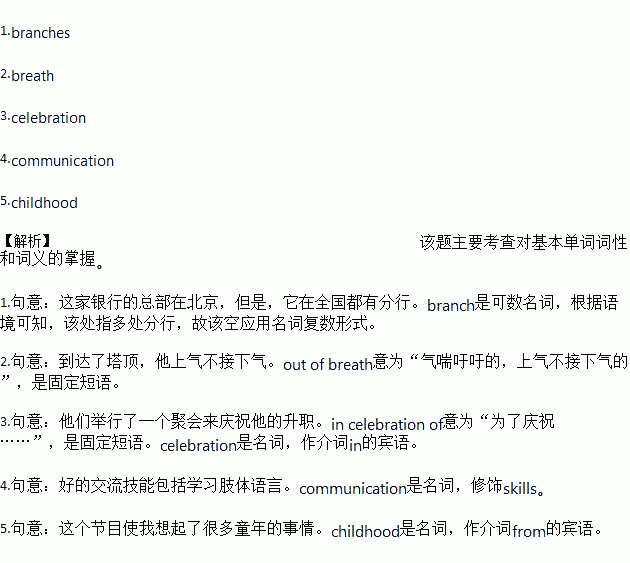题目内容
1.The head office of the bank is in Beijing, but it has _____________ all over the country. (分支,分行)
2.Reaching the top of the tower, he was out of ___________.(到了塔顶他就上气不接下气了。)
3.They held a party in ______________ of his promotion.(庆祝)
4.Good _________________ skills include learning body language.(交流)
5.The program reminds me of many things from my own _____________ (童年)
练习册系列答案
相关题目

